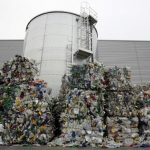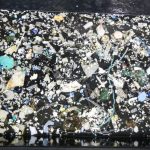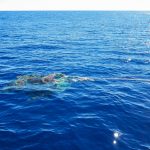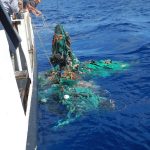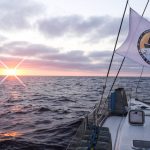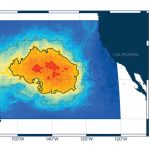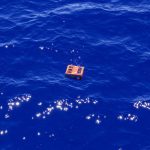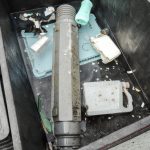Giant garbage vortex
 The giant garbage vortex in the Pacific Ocean is over twice the size of Texas — here’s what it looks like
The giant garbage vortex in the Pacific Ocean is over twice the size of Texas — here’s what it looks like
By Kevin Loria Sfrom Business Insider
The Ocean Cleanup
The Great Pacific Garbage Patch is a massive area measuring more than 1.6 million square kilometers, but it’s just part of the North Pacific Gyre, an ocean region where currents collect plastic.
Researchers from the Ocean Cleanup foundation conducted a survey of plastic in the area, using planes to observe from the sky and boats to trawl the water.
They found that the amount of plastic there seemed to be increasing exponentially and that there could be 16 times as much as previously thought.
There’s far too much plastic in the world’s oceans, and the problem continues to build up.
Every little bit of plastic that gets tossed into the ocean or swept downstream out to sea either sinks or is picked up by currents. Much of it is eventually carried into one of five massive ocean regions, where plastic can be so concentrated that areas have garnered names like the Great Pacific Garbage Patch.
On Saturday, the Ocean Cleanup Foundation plans to deploy a massive plastic-collecting array with the hope that it can remove plastic debris from this part of the ocean. Some ocean researchers who study plastic pollution have questioned the plan, saying it may not be able to effectively remove enough plastic to be worth the cost and that it may harm marine life. But until it’s out in the water, we won’t know how much of an impact it’ll have. If they deem it successful, the foundation hopes to launch a whole fleet of similar devices.
While “garbage patch” might make you think of something you pass by on the side of the road, the Great Pacific Garbage Patch in the North Pacific Ocean is less like a patch and more like a massive swirling vortex more than three times the size of Spain and more than twice the size of Turkey or Texas.
And it’s growing and collecting more plastic rapidly, according to a study published in the Nature journal Scientific Reports by researchers associated with the Ocean Cleanup Foundation.
There may be more than 16 times as much plastic in the vortex than previous studies have estimated, according to the researchers behind the study.
An aerial view of the Great Pacific Garbage Patch might at first appear to be open water. But inside there’s debris from all over the world — debris that traps or is eaten by marine animals, filling up their bodies to the point of being fatal and tainting our food supply.
More than 320 million metric tons of plastic are produced every year — and a disturbing amount ends up in the ocean, with much of it accumulating in places like the Great Pacific Garbage Patch.
Much of the Ocean Cleanup foundation’s data on the Great Pacific Garbage Patch comes from a 2015 expedition involving 18 vessels.
The Ocean Cleanup
The Ocean Cleanup, a Dutch organization started by a young entrepreneur named Boyan Slat, wants to launch a somewhat controversial effort to clean up the Great Pacific Garbage Patch and has conducted research about the scale of the problem.
The ships trawled the waters using manta trawl nets outfitted with mesh to catch as much plastic as possible.
The Ocean Cleanup
The area they focused on is a particularly concentrated part of one of the five global gyres where ocean currents collect plastic from around the world.
The Ocean Cleanup
The region is huge, at more than 1.6 million square kilometers (617,800 square miles).
The Ocean Cleanup
For comparison, Texas is about 269,000 square miles.
In 2016, the Ocean Cleanup foundation used a Hercules C-130 aircraft to conduct an aerial survey of the region to refine its data and count larger pieces of plastic (greater than 50 centimeters).
The Ocean Cleanup
The researchers collected 1,136,145 pieces of debris that weighed a total of 668 kilograms and were made up of 99.9% plastic.
The Ocean Cleanup
From that, the researchers estimated the area had at least 1.8 trillion pieces of plastic in the water, weighing 79,000 metric tons — with more arriving every minute of every day.
The Ocean Cleanup
They estimated that 1.7 trillion pieces were microplastics (between 0.05 and 0.5 centimeters) but that 92% of the total plastic mass came from larger pieces.
The Ocean Cleanup
These nets drift through the sea, ensnaring creatures and breaking into smaller bits of plastic.
They also estimated that 46% of the plastic mass was from lost fishing nets known as
The Ocean Cleanup
The team also thinks the 2011 tsunami that hit Tohoku, Japan, could have added significantly to the mass of plastic.
The Ocean Cleanup
This may vastly underestimate the amount of plastic in the area, both because the researchers measured only within the boundaries of the
The Ocean Cleanup
While the foundation wants to push for a plan to clean up the plastic in the patch, many researchers think our best bet is stopping pollution from making it into the ocean in the first place.
Thomson Reuters


